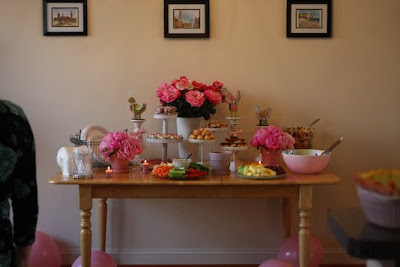I was at a double baby shower for two of my friends the other evening, and one of my good friends, Lis, was taking pictures of the gorgeous display of food (you know the kind that looks too good to eat?!). Lis was having a hard time getting the lighting just right, so she and I did some experimenting. There are so many things that go into getting a good photo, but the one thing that I concentrated on that night (and what I’m going to talk about today) is shutter speed.
Just for the record, a few of those “other things” are ISO and aperture. Because they are connected, changing one will effect the others and alter the results that you get. I’ve heard of it as the “exposure triangle.” But I am only talking about shutter speed today.
What is shutter speed?
Basically, shutter speed is the amount of time that the camera’s shutter (or the opening that lets light into the camera’s sensors) stays open. The shutter speed is measured in seconds (or fractions of seconds). A shutter speed of ½ of a second is considered a very slow (or long) shutter speed, while 1/1000 is considered a very fast (or short) shutter speed. short shutter speed has a smaller number on the bottom. A fast shutter speed has a larger number on the bottom. According to a camera, a second is a very long time.
I caught this silly shot of Necco jumping over a line of pumpkins by using a very fast shutter speed (1/500). As you can imagine, she wasn’t in the air for very long. If I had used a slow shutter speed such as 1/10 (of a second) she would be a blur of orange in the air.

If your camera has the ability to change settings, look for the Tv (time value) or S (shutter) mode (this is available on all SLRs and many point and shoot cameras). If your camera does not allow you to specify the shutter speed, look for the running man (sports mode) for a fast shutter speed to stop action.
Going back to the baby shower the other night, here is the original shot of the food table, taken at a high ISO and a fast shutter speed.
 Here’s another shot taken at a lower ISO (so it will be less grainy) with a slower shutter speed that let’s in more light. The food wasn’t moving anywhere, so I knew I didn’t need to worry about motion.
Here’s another shot taken at a lower ISO (so it will be less grainy) with a slower shutter speed that let’s in more light. The food wasn’t moving anywhere, so I knew I didn’t need to worry about motion.

When setting up a shot, consider the movement in the scene. When I shot the baby shower table, nothing in the scene was moving, so I was able to use a slower shutter speed to let more light into the shot. However, if AJ had been in the photo, it probably would have looked horrible because he is always moving.
See the example below. Because I used a slower shutter speed, AJ is a blur, but there’s something about the intentional blur that really conveys his energy in a way that a stop-action shot could not.

There are occasions where motion in your pictures is desirable. Say you want to take a photo of a waterfall or a bicycle or car zooming past….or an energetic 3 year old playing at the park. Those are the occasions where a slow shutter speed would be the way to go.
In summary, this is what you need to keep in mind:
* The longer the shutter stays open, the more light that comes into the camera, and the more likely you will be to get blurred motion.
* The shorter the shutter stays open, the less light that comes into the camera, and the more likely you will be to freeze the action in your shot.
© 2009, Food Fun Family. All rights reserved.

Leave a Reply